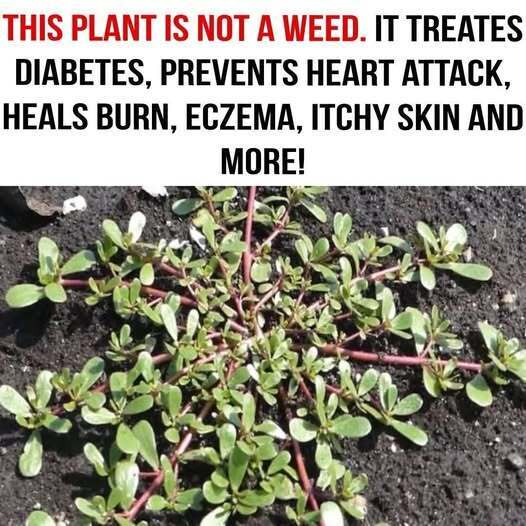Many Confuse This Plant with a Weed, But It’s Actually Full of Surprising Health Benefits 🌿💪
Purslane, which scientists call Portulaca oleracea, goes by a few other everyday names too, like pigweed, little hogweed, and fatweed. Interestingly, it’s also a popular leafy vegetable in many parts of the world, especially in Asia and Europe around the Mediterranean Sea. It’s not too difficult to grow, and it’s packed with important minerals and vitamins that can help protect your body. It makes sense then that people have used this juicy plant in traditional medicine for a long time. In fact, traditional Chinese medicine calls it “the vegetable for long life.”
What Good Things Are Inside Purslane? 🌱
This fleshy plant is full of many helpful nutrients. It contains good amounts of vitamins A, E, and C, as well as minerals like calcium, magnesium, manganese, potassium, and iron. You can also find smaller amounts of folate, phosphorus, and copper in it, along with B vitamins like B1, B2, and B3. Because purslane is mostly water (about 93%), it doesn’t have many calories, but it’s very rich in nutrients. Plus, it’s a versatile food that you can easily add to many different kinds of meals.
A Good Source of Healthy Omega-3 Fats 🐟🥬
Omega-3 fatty acids are important fats that our bodies can’t make on their own, so we need to get them from the food we eat. When people think of omega-3s, they often think of oily fish like salmon. But purslane is a great example of a plant that contains these healthy fats. While this plant doesn’t have a lot of fat overall, most of the fat it does have is in the form of omega-3s, according to Healthline. What’s more, it contains two main types of these fatty acids: ALA and EPA. ALA is found in many plants, like spinach, but purslane has a lot more – about 5 to 7 times as much. On top of that, EPA is usually found in animal products and algae, and it’s not very common in plants that grow on land. EPA is also known to be more readily used by the body than ALA.
Full of Protective Antioxidants 🛡️🍊
The vitamins found in purslane are also antioxidants, which help protect our bodies. For instance, vitamin C, also known as ascorbic acid, helps keep our bones, skin, and muscles healthy. Vitamin A contains beta-carotene, which is well-known for helping with good eyesight. And purslane has alpha-tocopherol, a type of vitamin E that may help protect the outer layers of our cells from damage. Additionally, this plant contains other antioxidant compounds like glutathione and betalain, which also help protect cells from harm. It even has melatonin, which is a natural substance that can help with sleep.
Rich in Potassium and Calcium 🦴🫀
CONTINUE READING ON THE NEXT PAGE 🥰💕

